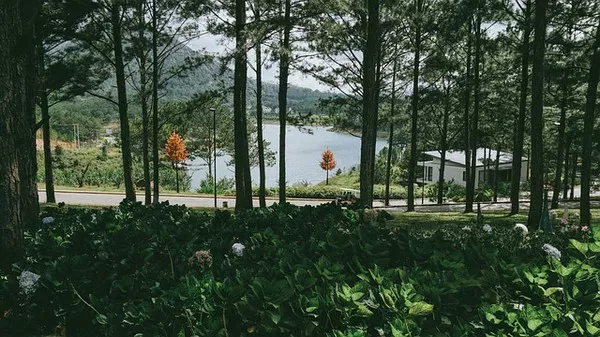Bamboo, an ancient and versatile plant, has been cherished for its eco-friendly properties and manifold applications throughout human history. While many recognize bamboo for its rapid growth, few are aware of its remarkable longevity. This article explores the fascinating world of bamboo’s lifespan, drawing from botanic research and anecdotal evidence. Delving into the factors influencing bamboo’s longevity and the secrets behind its enduring vitality, we shed light on this ageless marvel of the plant kingdom.
Bamboo, a member of the grass family Poaceae, comprises over 1,400 species that have adapted to diverse environments worldwide. Revered for its strength, flexibility, and sustainable attributes, bamboo has been utilized in construction, food, medicine, and countless other applications for millennia. One lesser-known aspect of bamboo is its impressive lifespan, which rivals that of some of the most long-lived trees on Earth. In this article, we explore the longevity of bamboo, shedding light on the factors contributing to its extended life and dispelling common misconceptions.
I. Factors Influencing Bamboo Longevity
Species Variation:
The lifespan of bamboo varies significantly depending on the species. Some bamboo species, like the giant timber bamboo (Dendrocalamus giganteus) and the black bamboo (Phyllostachys nigra), have been known to live for over a century. Conversely, smaller bamboo species may have relatively shorter lifespans. Understanding the specific species is crucial when evaluating the potential longevity of bamboo.
Environmental Conditions:
Like all living organisms, bamboo’s lifespan is influenced by its habitat and the environmental conditions it experiences. The availability of sunlight, water, nutrients, and temperature play critical roles in determining bamboo’s growth rate and overall health. Bamboo plants living in optimal conditions tend to live longer than those in harsh environments.
Human Interference:
Human activities can also impact the lifespan of bamboo plants. Unsustainable harvesting and deforestation can lead to the decline of bamboo populations and reduce their lifespan. Conversely, proper management and conservation efforts can promote the survival of bamboo and protect their longevity.
II. Longevity Records of Remarkable Bamboo
The Oldest Bamboo Grove:
One of the most renowned examples of long-lived bamboo is the grove at the Kyoto Bamboo Forest in Japan. Estimated to be over 1200 years old, the bamboo in this grove has withstood the test of time, showcasing the resilience and durability of this remarkable plant.
Ancient Bamboo Forests in China:
China, home to diverse bamboo species, hosts several ancient bamboo forests that have existed for centuries. The Wuyishan Bamboo Forest and Anji Bamboo Forest are two prime examples, where bamboo plants have thrived for over 800 years.
III. The Bamboo Life Cycle
Germination and Growth:
The bamboo life cycle begins with germination, during which seeds sprout and develop into young shoots. During the initial stages, bamboo grows vigorously, and the rate of growth can be astonishingly fast, with some species reaching their full height within a few months.
Maturity and Flowering:
After several years of rapid growth, bamboo enters its mature stage, characterized by the hardening of the culms (stems) and the development of branches and leaves. Contrary to popular belief, bamboo does flower, but the process is rare and unpredictable. Many bamboo species, known as “gregarious” bamboos, flower simultaneously across vast areas, followed by mass die-offs. This phenomenon is known as “gregarious flowering” and occurs at irregular intervals, sometimes spanning decades or even centuries.
Regeneration:
Following gregarious flowering and fruiting, bamboo plants regenerate from seeds dispersed during the flowering phase. The newly sprouted bamboo seedlings begin the cycle anew, continuing the legacy of the bamboo grove.
IV. Bamboo and Cultural Significance
Bamboo Symbolism:
Across different cultures, bamboo is imbued with profound symbolism. In Asian cultures, it represents strength, flexibility, and resilience – qualities that are often admired and emulated by humans. Bamboo’s portrayal in literature, art, and religious practices further showcases its importance in these societies.
Traditional Uses and Practices:
Throughout history, bamboo has served as an essential resource for numerous traditional practices. From building materials to tools and musical instruments, bamboo has played a vital role in the development of various cultures.
V. Sustainable Bamboo Management and Conservation
Responsible Harvesting:
To ensure the longevity of bamboo and its continued contributions to human society, sustainable harvesting practices must be adopted. Proper timing and selective harvesting techniques can prevent damage to bamboo populations and allow for healthy regrowth.
Reforestation Efforts:
Conservation and reforestation initiatives are vital to protect bamboo habitats and preserve their genetic diversity. Such efforts not only safeguard bamboo’s longevity but also support the biodiversity of the ecosystems where bamboo thrives.
Conclusion:
Bamboo, the ageless marvel of the plant kingdom, continues to surprise and inspire with its remarkable longevity. With some bamboo species living for centuries and even millennia, it stands as a testament to the resilience of nature. Understanding the factors influencing bamboo’s lifespan, recognizing its cultural significance, and implementing sustainable management practices are essential steps in safeguarding the future of this extraordinary plant. Embracing bamboo’s legacy in a responsible manner will allow us to reap the benefits of this enduring wonder for generations to come.


